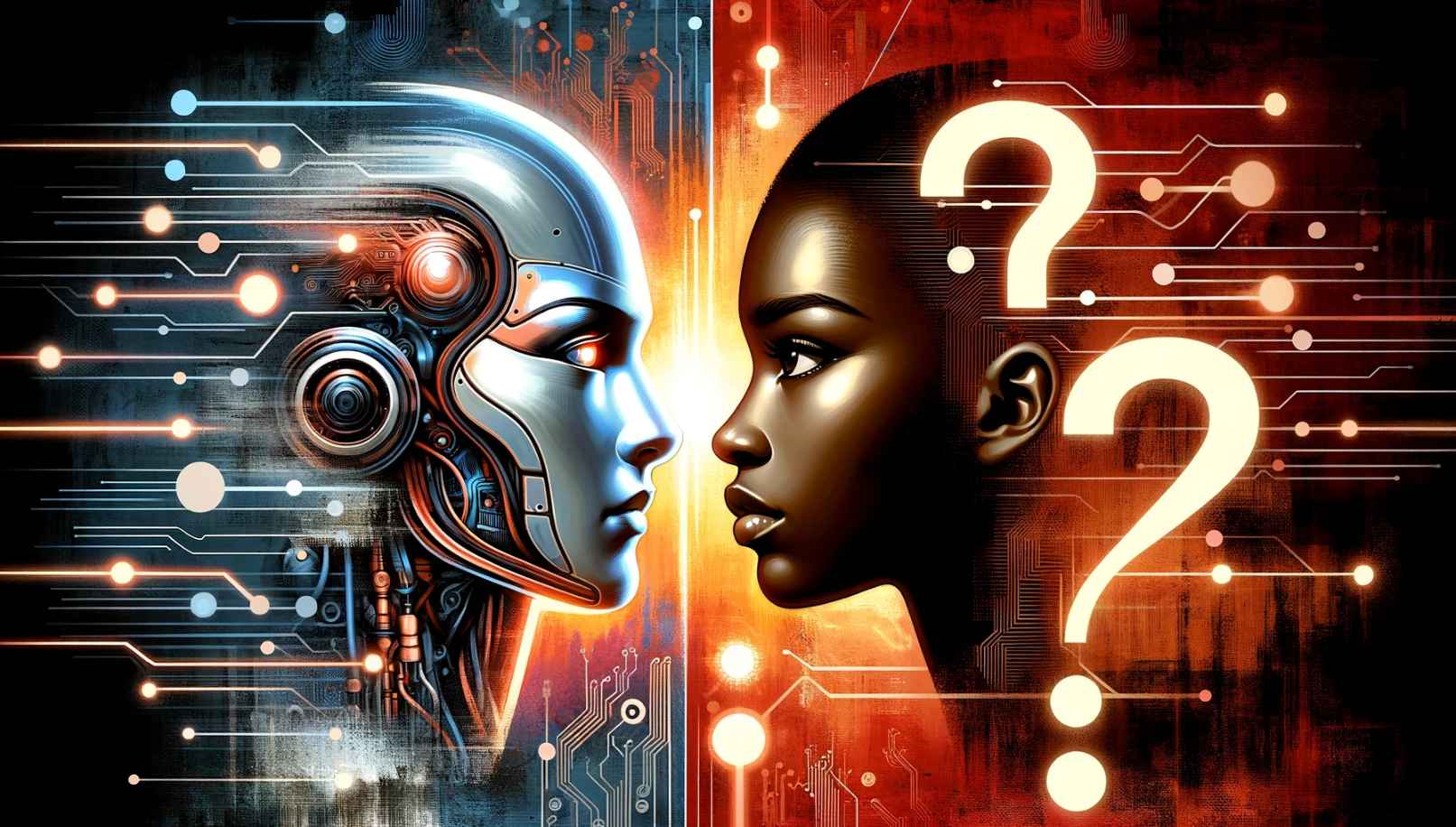What happens when the precision of AI tools collides with the realm of UX design?
As we venture into this futuristic landscape, AI offers groundbreaking efficiency and analytical prowess. Yet, amidst this digital transformation, a pivotal question arises: Can these intelligent systems truly replicate the empathetic, human-centric approach of UX designers?
While AI reshapes the UX field with innovative solutions, it stops short of mimicking the deep understanding, creative intuition, and emotional intelligence that human designers uniquely possess.
In this evolving era, the fusion of AI's analytical strengths with the irreplaceable touch of human empathy creates a UX design landscape rich with possibilities yet firmly grounded in human insight.

The Ultimate Guide for UX Designers
The only ebook you'll ever need to master AI for UX design.
Get 30% Off TodayUnderstanding the Role of UX Designers
The Essence of UX Design
UX designers are more than just architects of digital experiences; they are the bridges between technology and human emotion. They blend creativity with empathy to design interfaces that deeply resonate with users.
UX design is about crafting intuitive experiences rooted in understanding human behavior and solving problems innovatively. It's an art form centered around empathy, where designers connect with users' needs and create solutions that are both functional and emotionally engaging.
A Day in the Life of a UX Designer
Imagine a day in the life of a UX designer, Sarah. Her day starts with analyzing user feedback and identifying behavioral patterns to inform her design decisions. Collaborating with her team, she brainstorms and shapes the user journey for the next app update.

During usability testing, she observes users in action, gathering insights to refine her designs. Her evening is spent crafting wireframes, balancing technical precision with creative expression. Each of Sarah's tasks, from research and problem-solving to empathizing and designing, impacts how users interact with the product.
Her role is quite diverse and impactful, requiring a blend of storytelling, strategy, and empathy. Ultimately, UX designers like Sarah ensure technology enhances human interaction, making their role crucial in the digital world.
The Limitations of AI in UX Design
The Human Element in Design
Despite AI's advancements, it falls short of replicating the human element crucial to UX design. Empathy and a deep understanding of user needs, central to UX, are uniquely human traits.
AI cannot genuinely and humanely empathize with users or grasp the subtleties of human emotions and experiences. As outlined in various studies, including those by UXDesign.cc and the UX Design Institute, AI cannot replace the intuitive and empathetic abilities of human UX designers.
Support from Expert Opinions
Experts concur that while AI can enhance certain aspects of the design process, it cannot supplant the human-centric approach. These articles from sources like Visily.ai and The Alien Design affirm this view, emphasizing AI's role as a tool rather than a substitute.
Studies suggest that the nuanced understanding of human behavior, cultural sensitivities, and emotional intelligence necessary for effective UX design remains beyond AI's current capabilities. AI's role in UX design is thus seen as complementary, providing analytical support but not replacing the essential human touch.
How AI Complements UX Designers
Magical AI Tools Aiding UX Design Tasks
AI tools are enhancing UX design tasks by offering functionalities that automate and streamline the creative process:
UXPilot: UXPilot by Adam Fard Studio is an AI-driven tool designed to enhance the UX design process. It offers features like UI Generator, AI-UX Design Review for improving user interfaces, integrates ChatGPT with Figma for real-time collaboration and insights, and provides custom workshops for team-oriented design challenges. Additionally, it aids in requirements gathering to align designs with project goals and facilitates the creation of comprehensive style guides, ensuring design consistency. UXPilot stands out as a versatile tool for UX designers, offering a range of functionalities to streamline and optimize the design process.
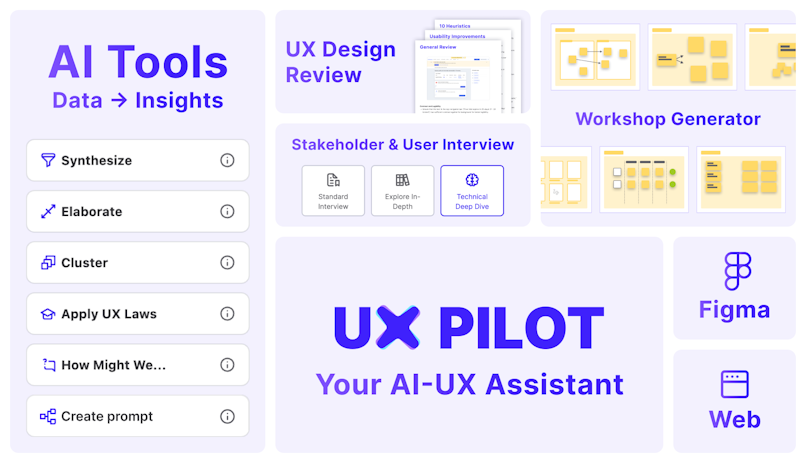
UIzard: Uizard is an AI-powered UI design tool that revolutionizes the UX design process. It enables effortless and limitless design by allowing users to generate mockups from text prompts, convert screenshots and hand-drawn sketches into digital designs, and use drag-and-drop functionality for UI components. The tool streamlines project workflows facilitates real-time collaboration, and accelerates the transition from concept to prototype. Ideal for creating wireframes, mockups, and prototypes, Uizard offers rapid design capabilities and pre-made templates to enhance creativity and productivity in UX design.
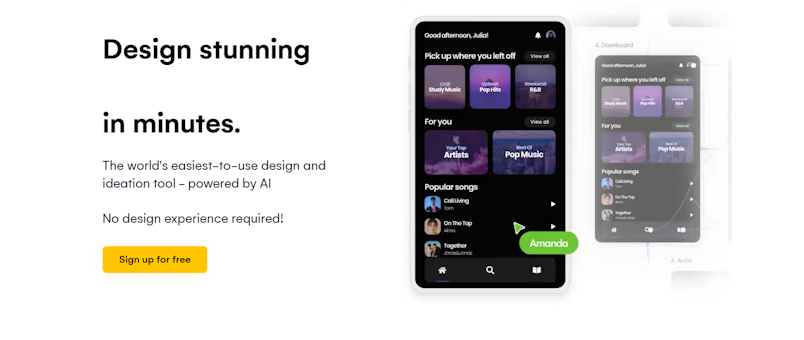
FigmaAI: A plugin for Figma that primarily helps in creating and styling images, as well as generating text for designs. It offers a three-step process: entering a prompt, choosing a style, and generating the image, which is particularly useful for designers looking to automate part of the visual design process.
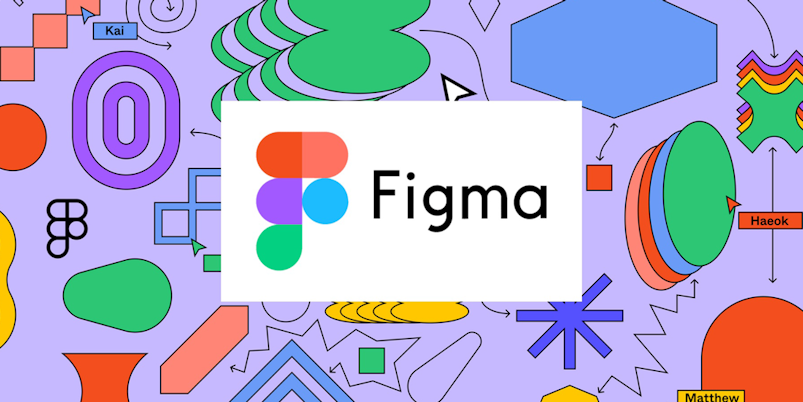
More Magical AI Tools: Are you a UX Designer looking to revolutionize your creative workflow? You are so in luck because aside from the above-listed tools, we’ve done all the heavy lifting for you by compiling 10 Must-have AI tools to help you unleash your creativity and explore new possibilities in your design journey.

Future Potential of AI in UX Design
The future potential of AI in UX design is significant. AI tools are expected to evolve and offer more sophisticated support in areas such as predictive design, enhanced personalization, and even in ideation phases.
As these tools become more advanced, they will allow UX designers to focus more on strategic and creative aspects of design, such as understanding deeper user motivations and crafting more engaging user experiences. Let’s examine 7 crucial ways that AI will play a part in the designs of tomorrow.
Customization for Scale: AI will revolutionize UX design by enabling the creation of highly personalized user experiences. By analyzing vast user data and behaviors, AI can tailor digital interfaces and content uniquely for each user, offering an unprecedented level of personalization at scale.
Voice and Natural Language Interactions: As natural language processors and AI-powered voice assistants become more integrated into UX design, there will be a shift towards designing for voice interaction. This trend will necessitate a greater focus on creating accessible voice-guided experiences.
AI-Generated Content: Tools like ChatGPT will advance to generate not only text but also multimedia content. This evolution will support UX designers in efficiently producing diverse content types, including videos, visuals, and other dynamic elements, enhancing the overall user experience.
Ethical AI: Ethical considerations in AI usage within UX design will gain prominence. Designers will need to prioritize transparency, fairness, and user consent, ensuring that AI applications are responsible and respectful of user rights.
AI-Driven Analytics: AI's ability to analyze user behavior and make data-driven decisions will see a significant increase. This will empower designers with insights to create more effective and user-centric designs.
Augmented Reality (AR) and Virtual Reality (VR): The burgeoning field of AI-powered AR and VR will transform UX design. Designers will need to develop new skills and approaches to create immersive and interactive experiences in these virtual spaces.
Predictive User Experience Design: AI will enhance the ability to predict user needs and preferences, allowing designers to proactively adjust and personalize the UX. This anticipatory design approach, powered by AI, will lead to more intuitive and user-friendly interfaces. Tools like UXPilot are already leading in this aspect.
These trends suggest an exciting future where AI not only complements but significantly expands the capabilities and impact of UX design.
Adapting and Leveraging AI in UX Design
As the landscape of UX design rapidly evolves with the integration of artificial intelligence, designers must adapt and harness the power of AI. This shift is not about AI replacing human creativity but rather enhancing it.
Let’s explore how UX Designers can adeptly integrate AI into their workflow, ensuring their designs remain cutting-edge and user-focused.
Collaborate with AI for Creativity and Strategy: By harnessing AI for data analysis and routine tasks, UX designers can shift their focus to higher-level creative thinking and strategic planning. AI tools can aid in ideation, freeing designers to explore innovative concepts and holistic design strategies.
Lead in AR/VR and Voice UX: With the rise of AI in AR/VR and voice interactions, designers specializing in these areas can create more engaging, interactive experiences. They can utilize AI to understand user interactions better and create more responsive, intuitive designs in these immersive environments.
Advocate for Ethical UX: As AI becomes more integrated into design processes, ethical considerations around user data and privacy become critical. Designers must champion ethical practices, ensuring AI applications in UX respect user rights and promote inclusivity.
Utilize AI-Driven Analytics: AI's capability in analyzing large datasets can revolutionize UX research. Predictive analytics can offer insights into user behaviors, allowing designers to test and refine designs based on data-driven predictions, leading to more user-centric and effective designs.
Evolve with Technology: The field of UX is rapidly evolving with AI advancements. Designers need to stay abreast of these changes, continually updating their skills and methodologies to include AI-driven tools and approaches, ensuring they remain relevant and effective in the ever-changing landscape of UX design.
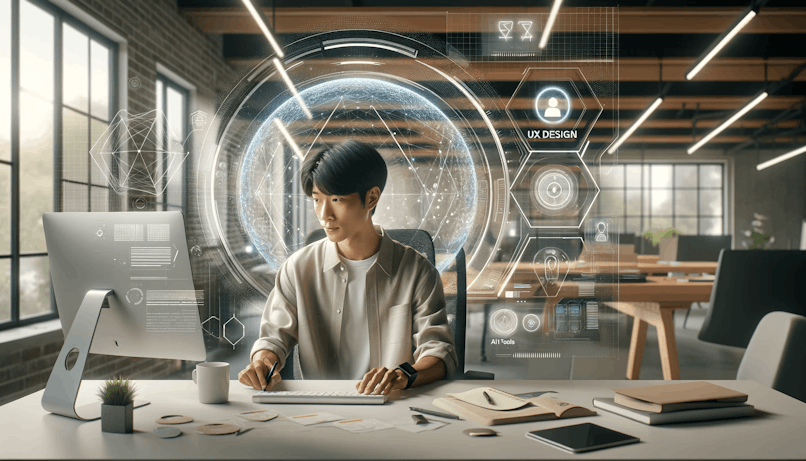
Staying Relevant in the AI Era
Embrace Continuous Learning: The landscape of AI in UX design is constantly evolving. UX designers should dedicate time to learning about emerging AI technologies and how they can enhance user experience. This includes exploring the latest tools, attending industry webinars, and keeping up with technological advancements.
Experiment with AI Tools: Hands-on experience with AI tools like ChatGPT, FigmaAI, and Uizard is invaluable. Designers should integrate these tools into their projects to gain insights into their capabilities, exploring how AI can optimize workflows and enhance design outcomes.
Network and Collaborate: Active participation in design communities and forums focused on AI will open doors to new ideas and perspectives. Networking with peers and experts in the field can provide unique insights into how AI is reshaping UX design.
Learning Resources and Skill Development
Online Courses and Webinars: Pursuing specialized courses and webinars that delve into AI's application in UX design can significantly expand a designer's skill set. These learning resources often provide practical knowledge and up-to-date information on integrating AI into design processes.
Workshops and Conferences: Attending workshops and conferences offers a platform to engage directly with AI tools and technologies. These events often feature hands-on sessions and discussions led by industry leaders, providing valuable learning experiences.
Read and Research: Keeping abreast of the latest books, articles, and case studies on AI and UX design is crucial. This continuous research helps designers understand the evolving role of AI and how it can be used to solve complex design challenges.
Conclusion
In conclusion, the integration of AI in UX design marks a transformative era, offering tools that complement and enhance the creative process. Yet, amidst this technological evolution, the irreplaceable human touch remains the cornerstone of UX design.
The empathy, intuition, and deep understanding that designers bring to their work cannot be replicated by AI. As we move forward, the synergy between AI's analytical capabilities and human creativity will continue to push the boundaries of what's possible, ensuring that UX design remains as innovative, user-centric, and empathetic as ever.


